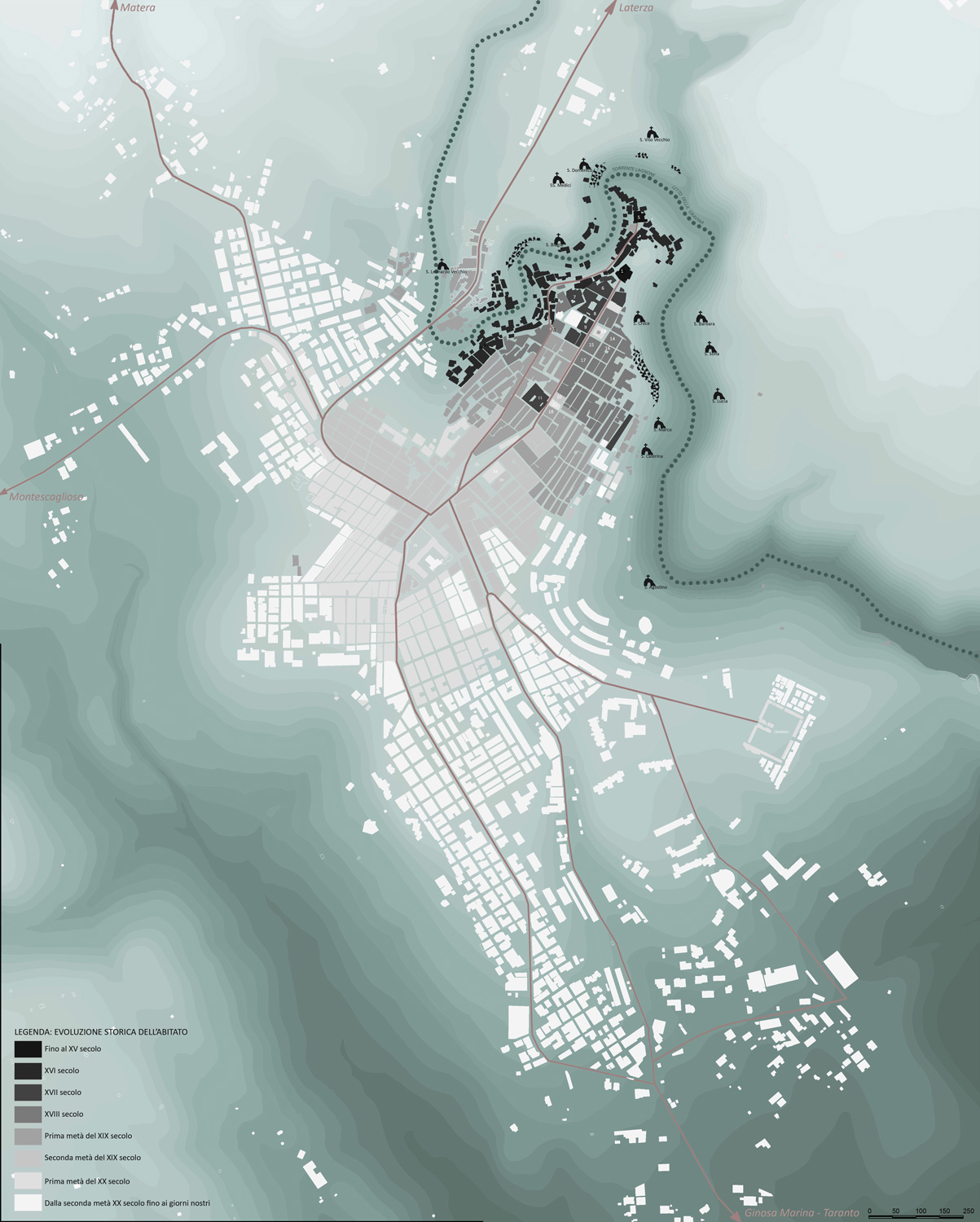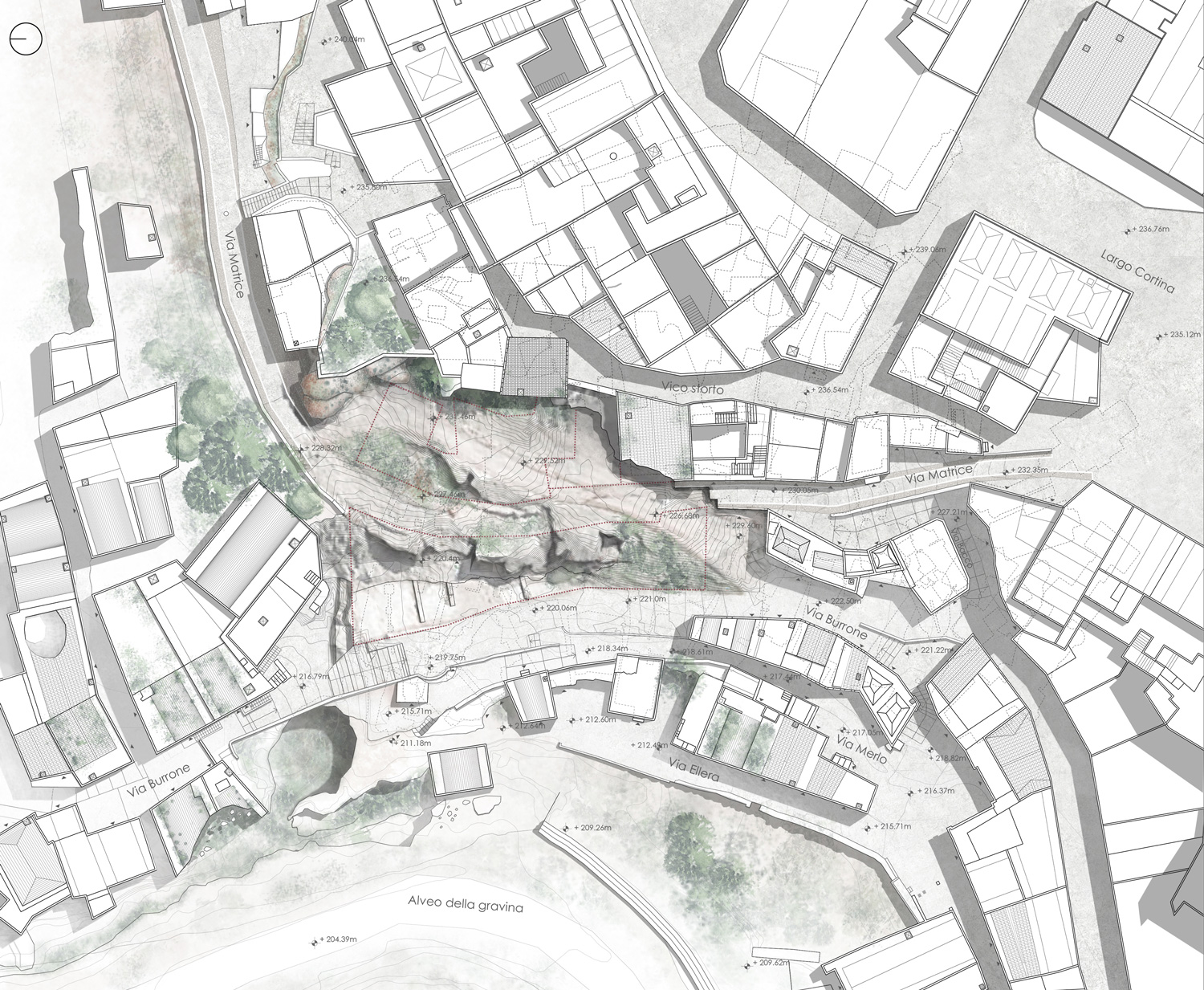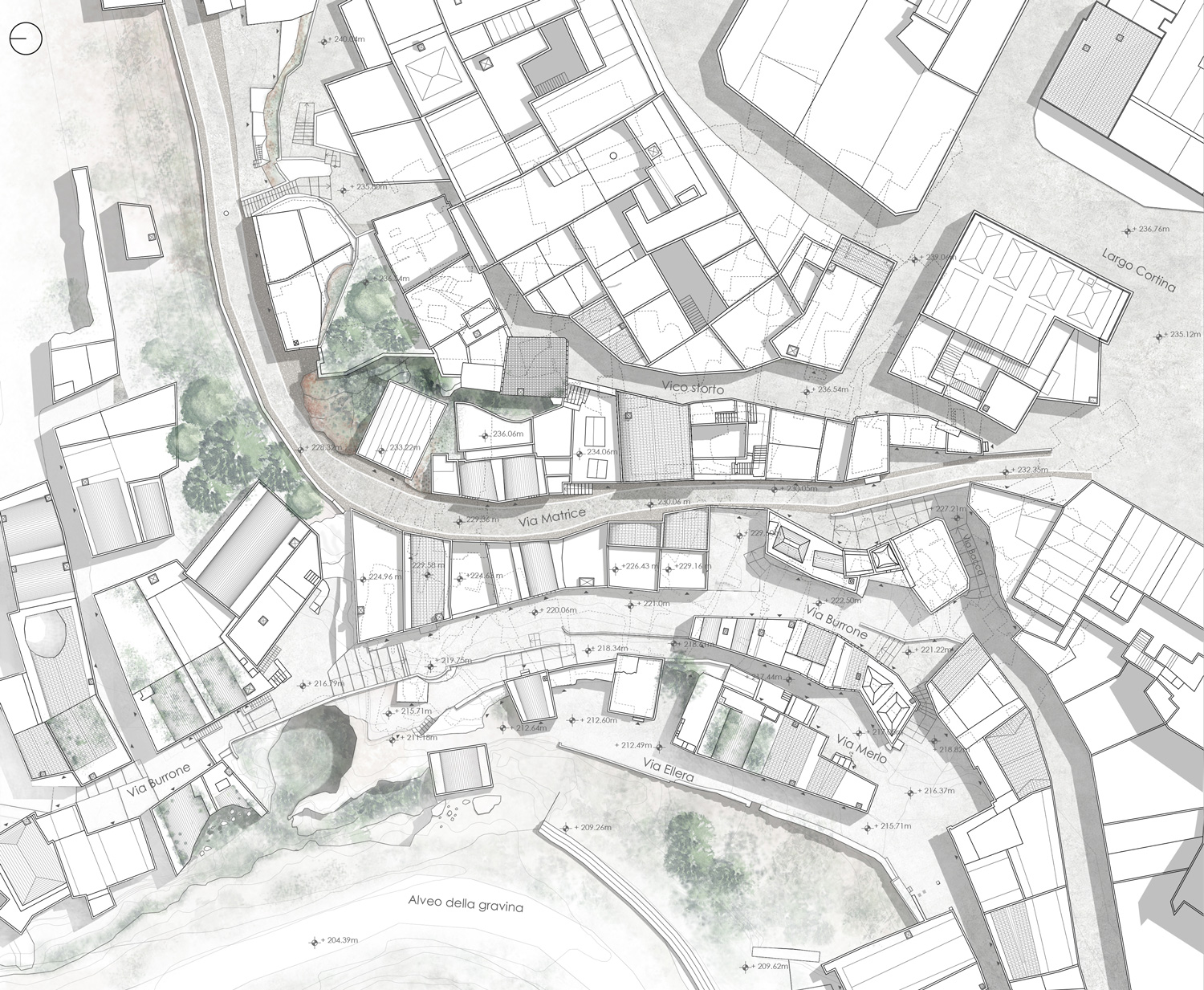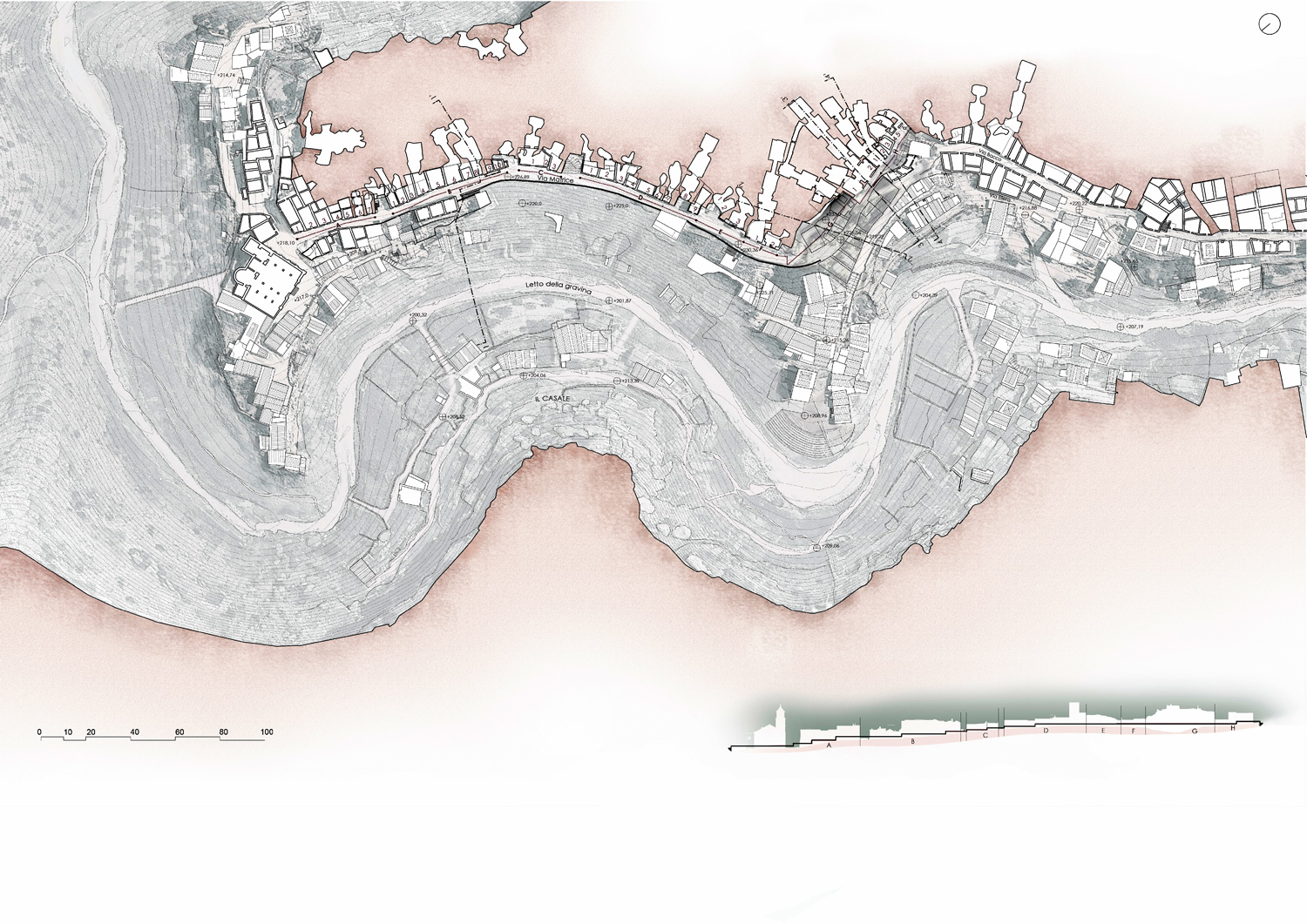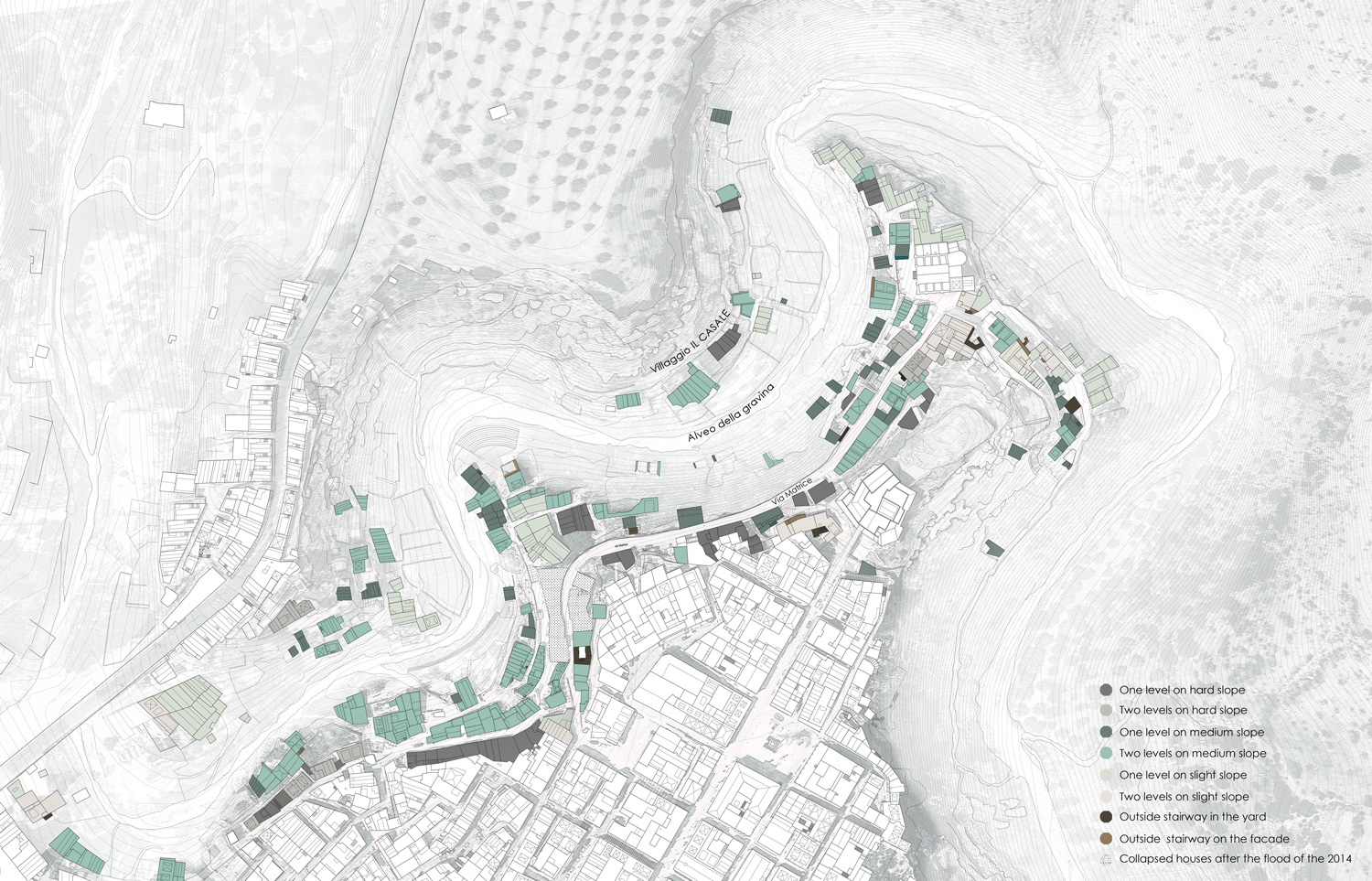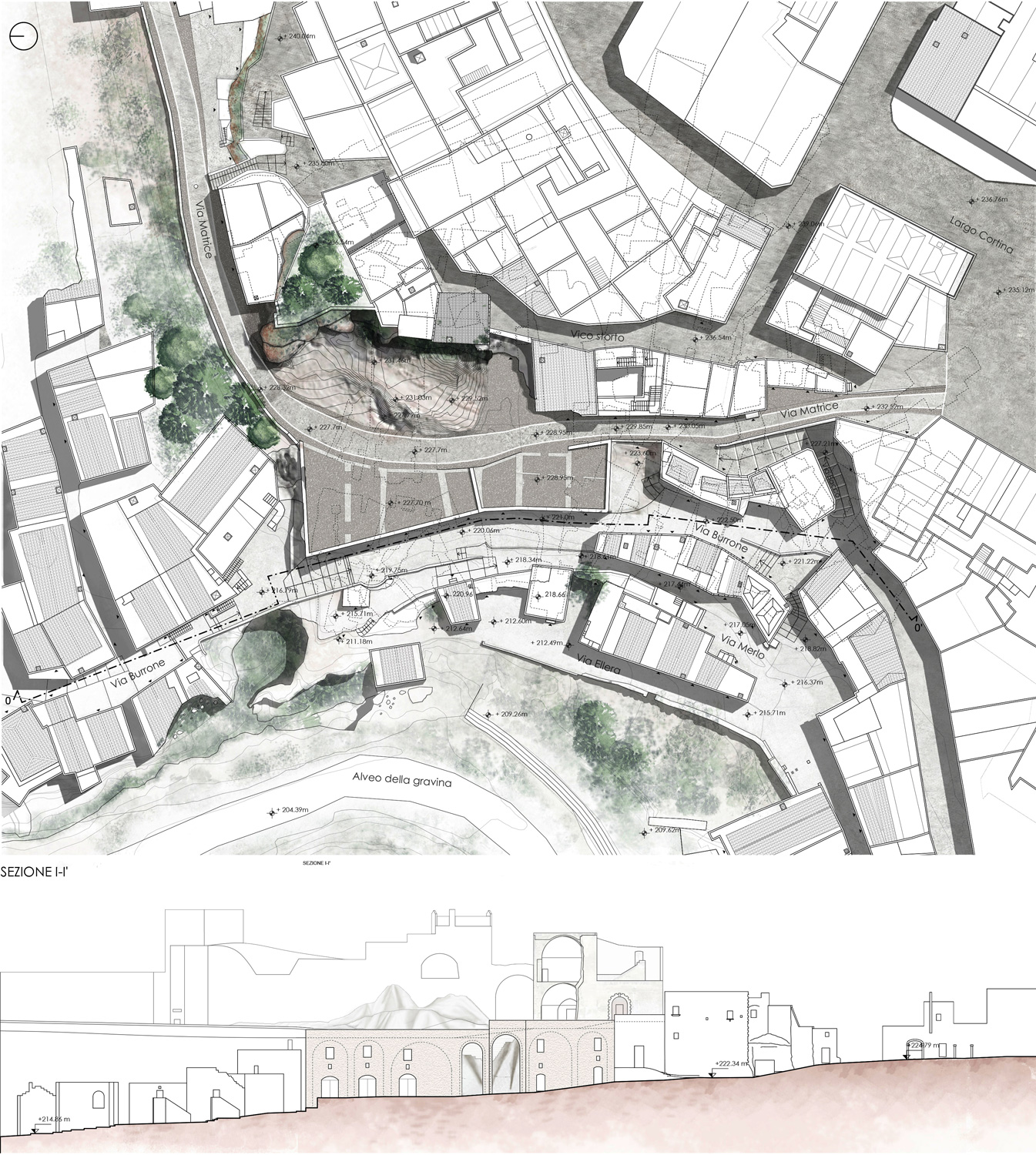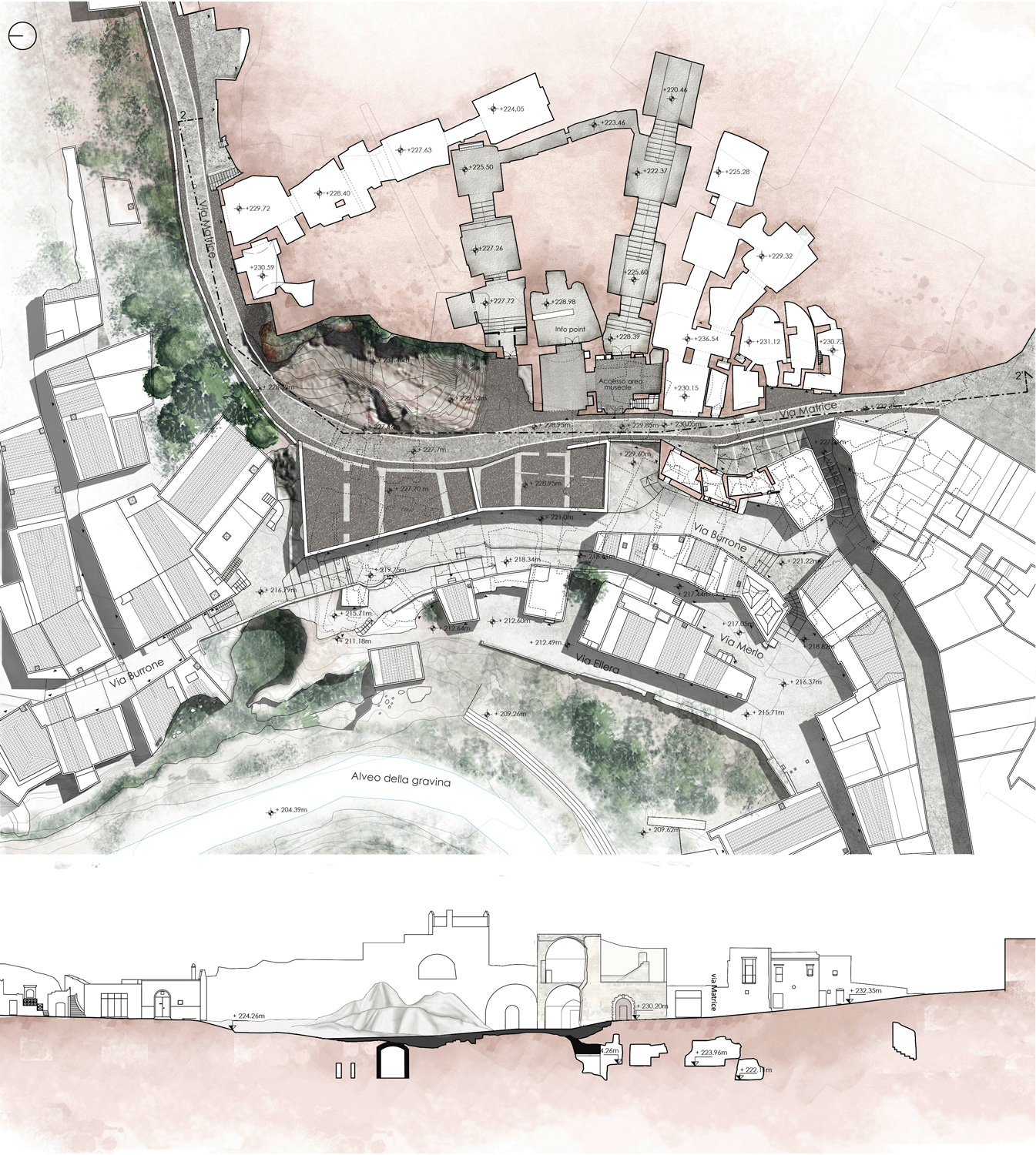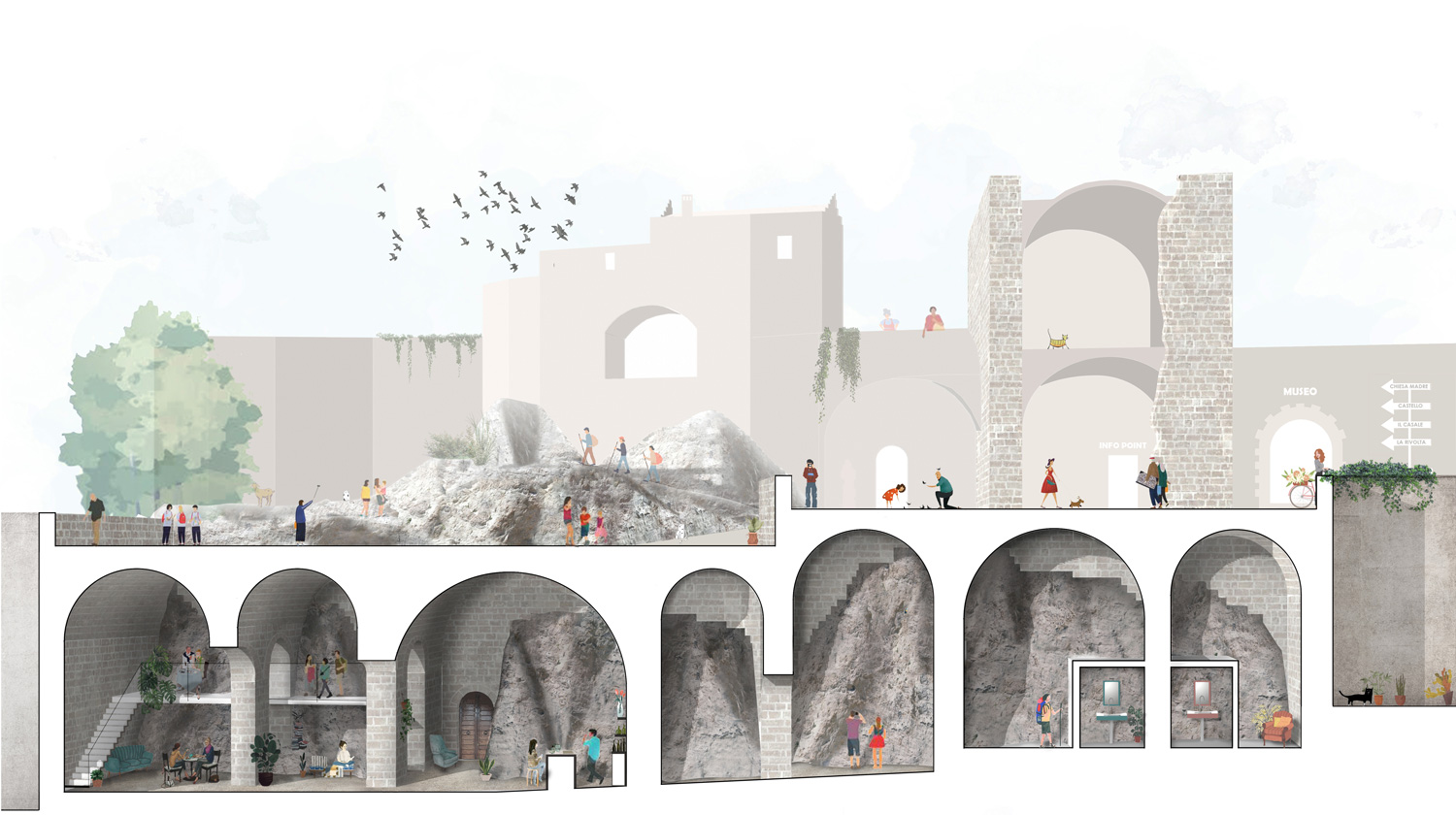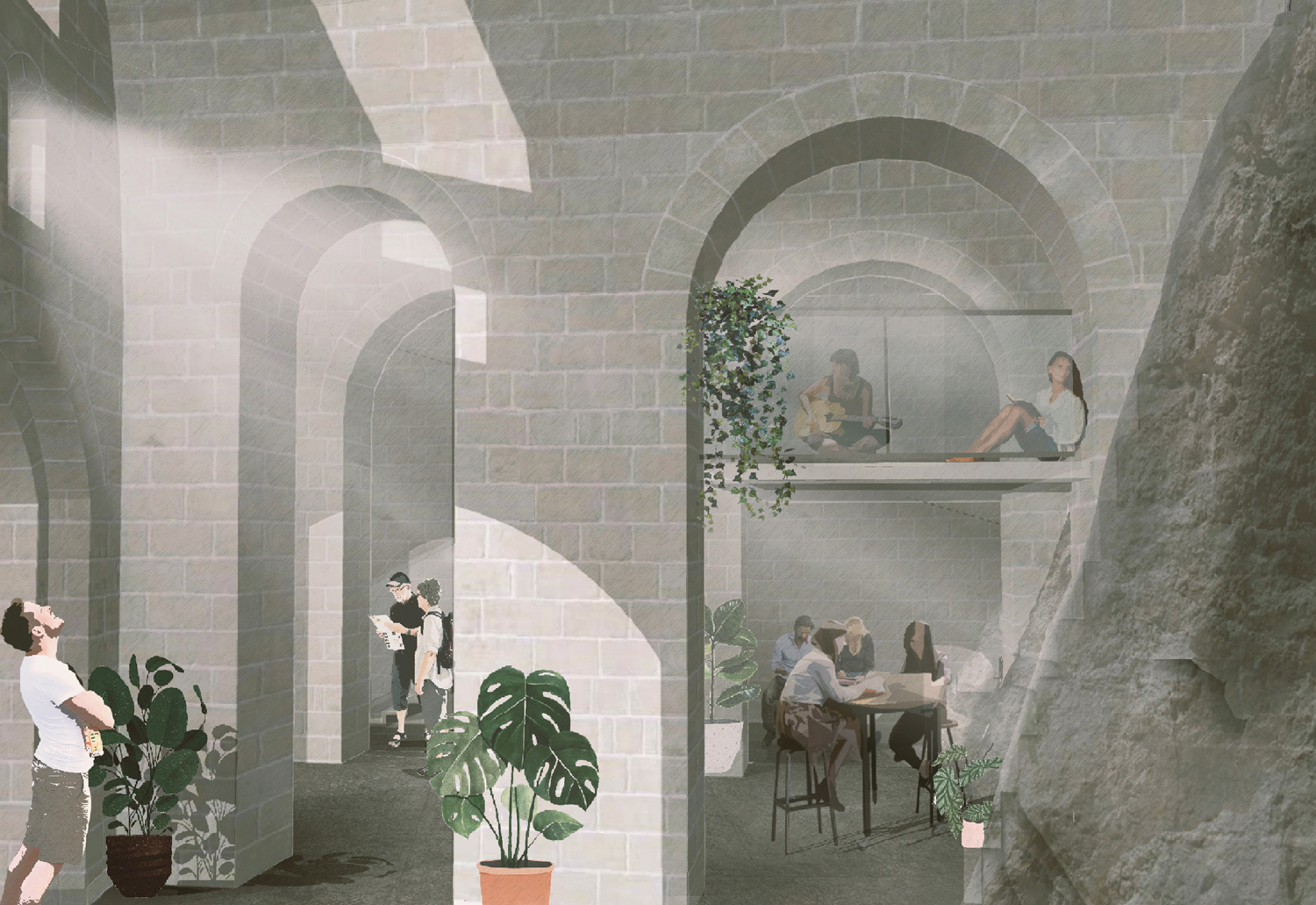☉ The gravina of Ginosa as a cultural park: a project for via Matrice. The historical path and the memory of the collapse is an academic project by Giusi Pardo developed in 2018. It is located in Ginosa Italy in an old town setting. Its scale is small with a surface of 100 sqm. Key material is stone.
The gravina of Ginosa is a small canyon in the rocks originated in many millennials from the erosive effect of meteoritic water. It surrounds a part of the town of Ginosa. The gravina is characterized by terracing and natural caves. It has promoted the anthropization of prehistory up to half of XX sec., leading to the formation of the house-cave type of building. Nowadays, the houses of gravina are part of a completely abandoned village.
In 2014, after many floods, the collapse of a hypogeum cap in the underground has determined the subsidence of the ground of via Matrice, which was the principal access street to gravina. This consequently caused the collapse of different buildings that were part of the street border of both via Matrice and the underlying via Burrone. The goal of the thesis is to mend via Matrice and redesign all the collapsed area, giving a new vision of gravina: a cultural park.
A reconstructive hypothesis of the evolution of the environment since Middle Ages has been realized to better understand the role of gravina and the importance of its components (the districts, the cave churches, the chiesa Madre, the castle and via Matrice) in relation to the urban development of the city of Ginosa.
Then, focusing on the houses of gravina, the diachronic mutations of the type of building in relation to the synchronic variations have been analyzed. The synchronic variations strictly depend from the slope of the terracement. After the learning and interpretative phase of the thesis, some reflection on the destiny of the village, in a broader view, have been drawn to define the safeguard strategy of both gravina of Ginosa and the identity of the place.
The vision of gravina as the cultural park has been proposed as a place in which the archeological component became an integral part of a landscaping system to valorize. The spontaneous activities like pasture and exploration remain, and cultural activities are added to promote the knowledge and fruition of the ambient. Everything is surrounded by the permanence of the ruin as historical memory of events and of the cave-houses, that in some points constitute an urban aggregate. The thesis ends with a project of the collapsed area: a mending of the historical path through the memory of collapse.
In the area, currently dominated by rocks and the ruin of the collapse, the mending of via Matrice has been designed on the level of the collapse. Moreover, the consolidation of the ruin, the caves and a new building in via Burrone, has been also designed. The new construction rises from the footprint of the houses collapsed up to the level of via Matrice. This not only redefines the street border of via Burrone, but also evokes a double memory. On one side, the drawing of the paving of the square that represents the plant of the collapsed buildings evokes what has been destroyed. On the other side, it evokes what remains of the collapse, because the building preserves on the inside a part of the collapse that invades the ambient, almost at remembering significantly what happened. Given the strategic position of the area, the caves and the building of the project contains welcoming functions for the cultural park of the gravina of Ginosa: an info-point, a museum, a bar, a wine cellar and toilette facilities.
